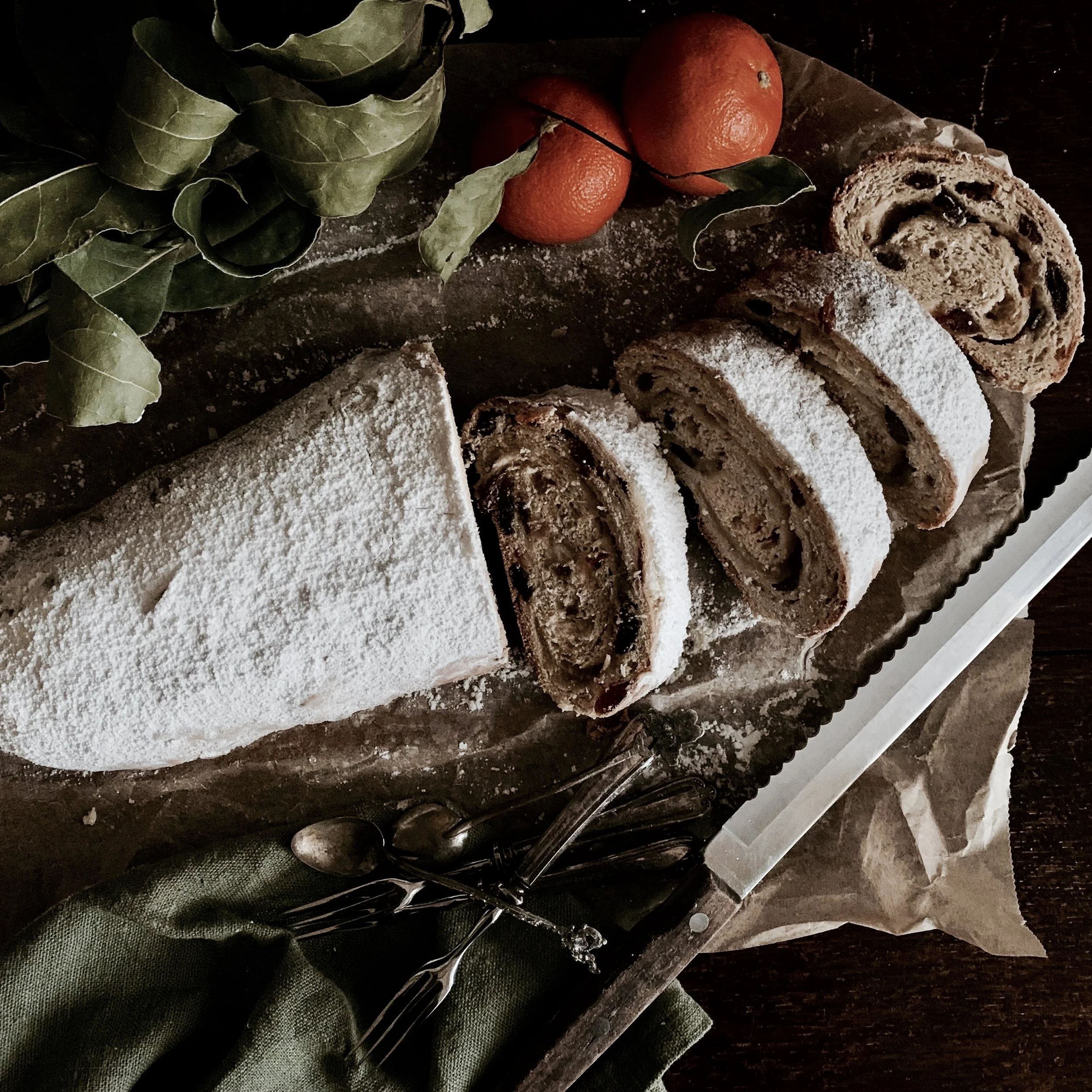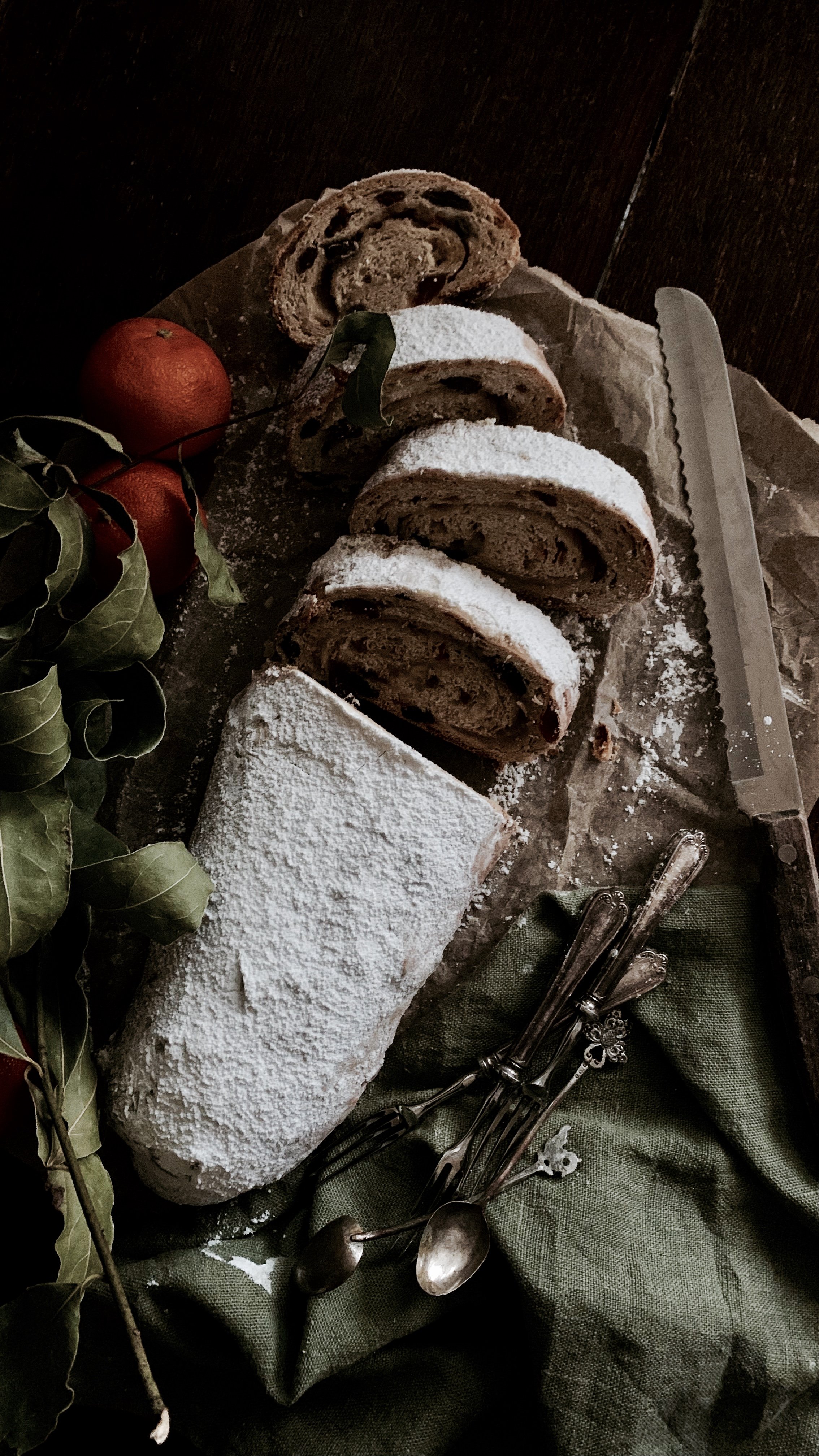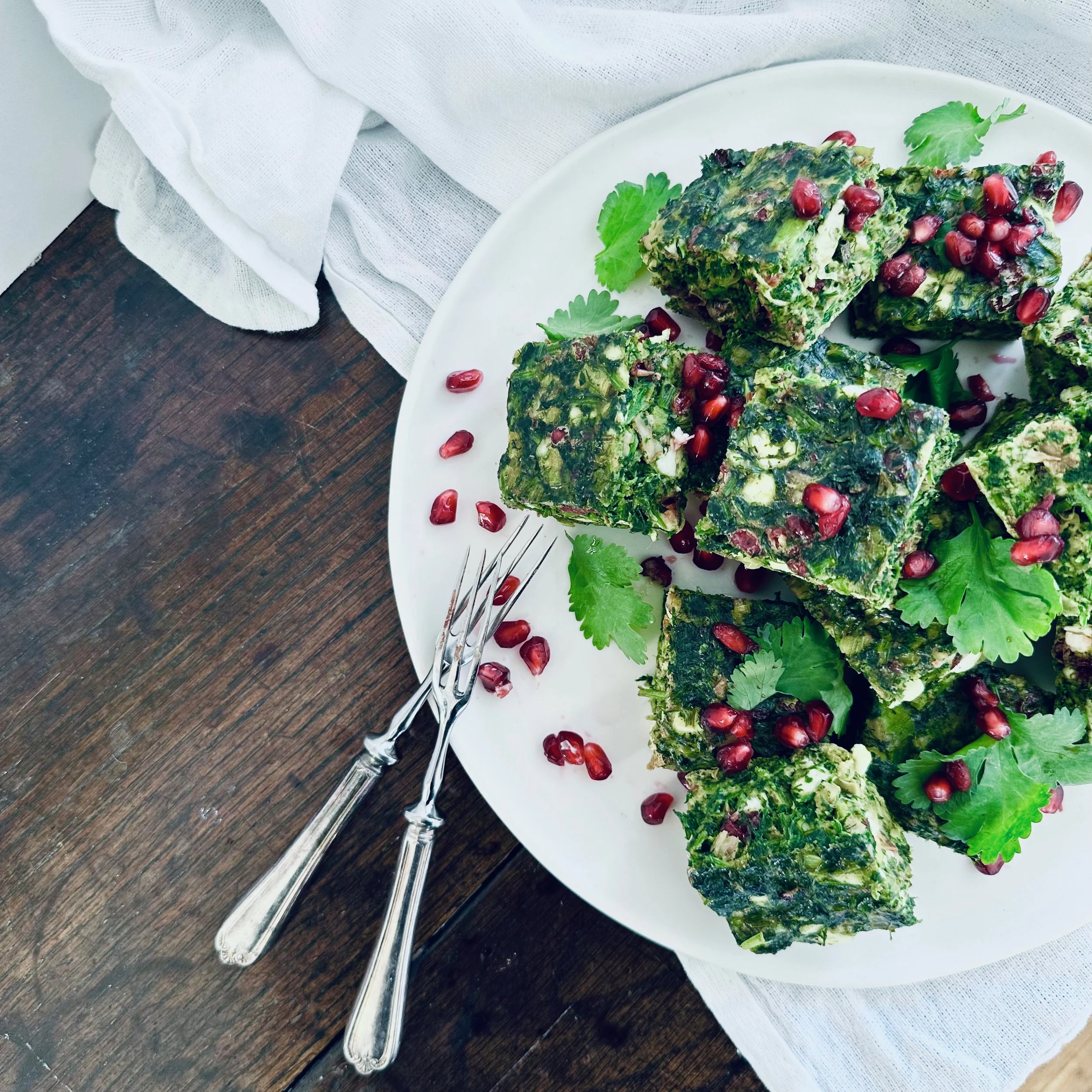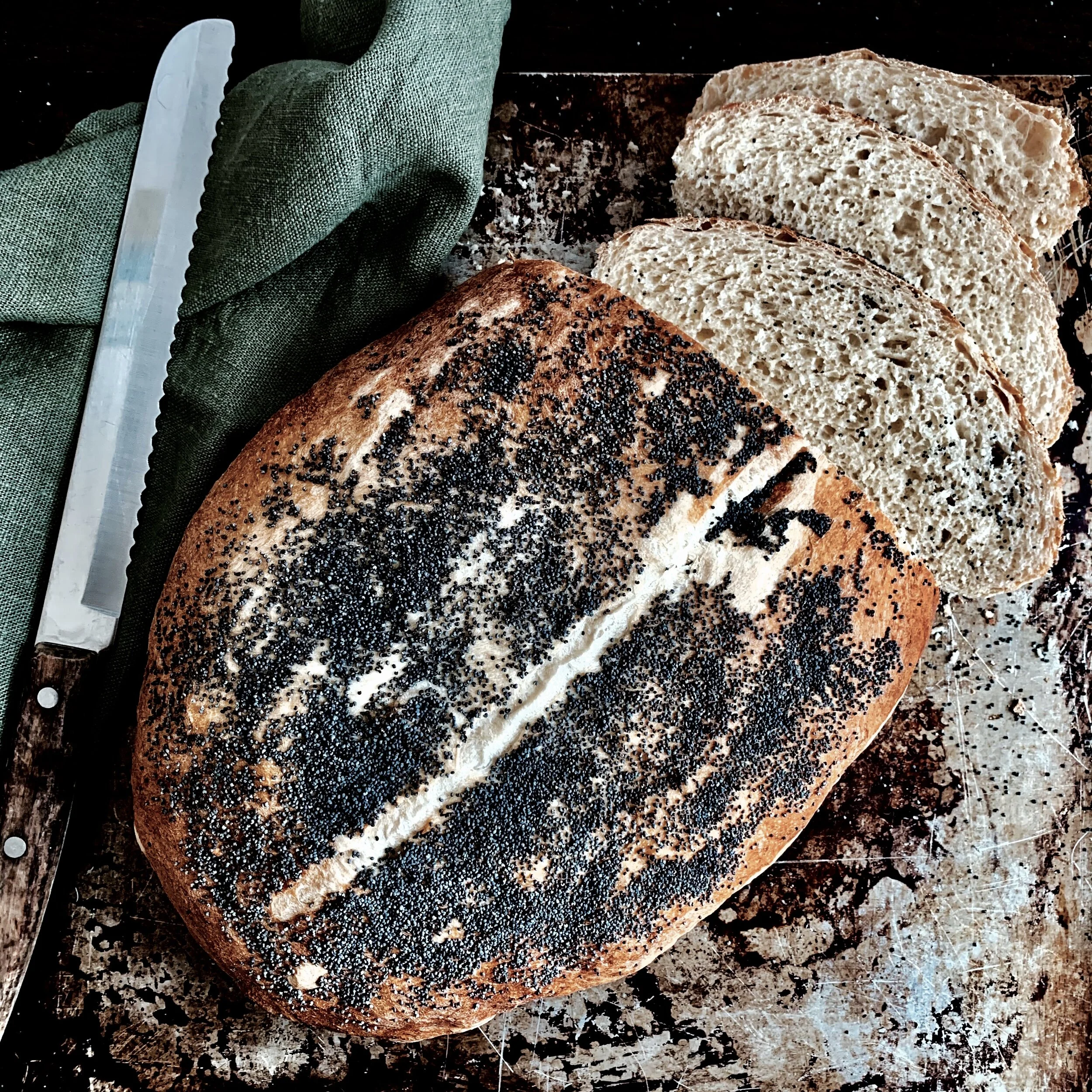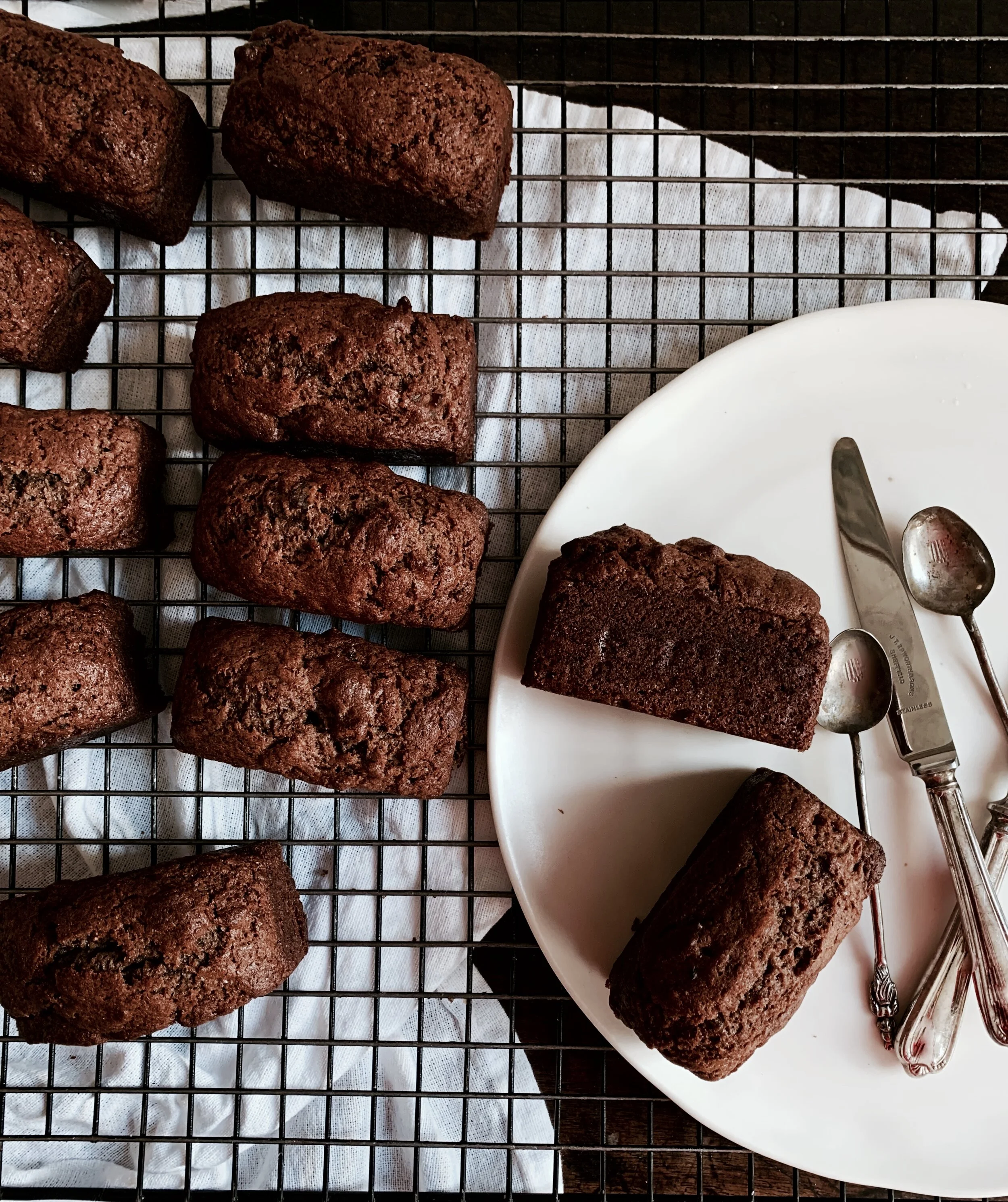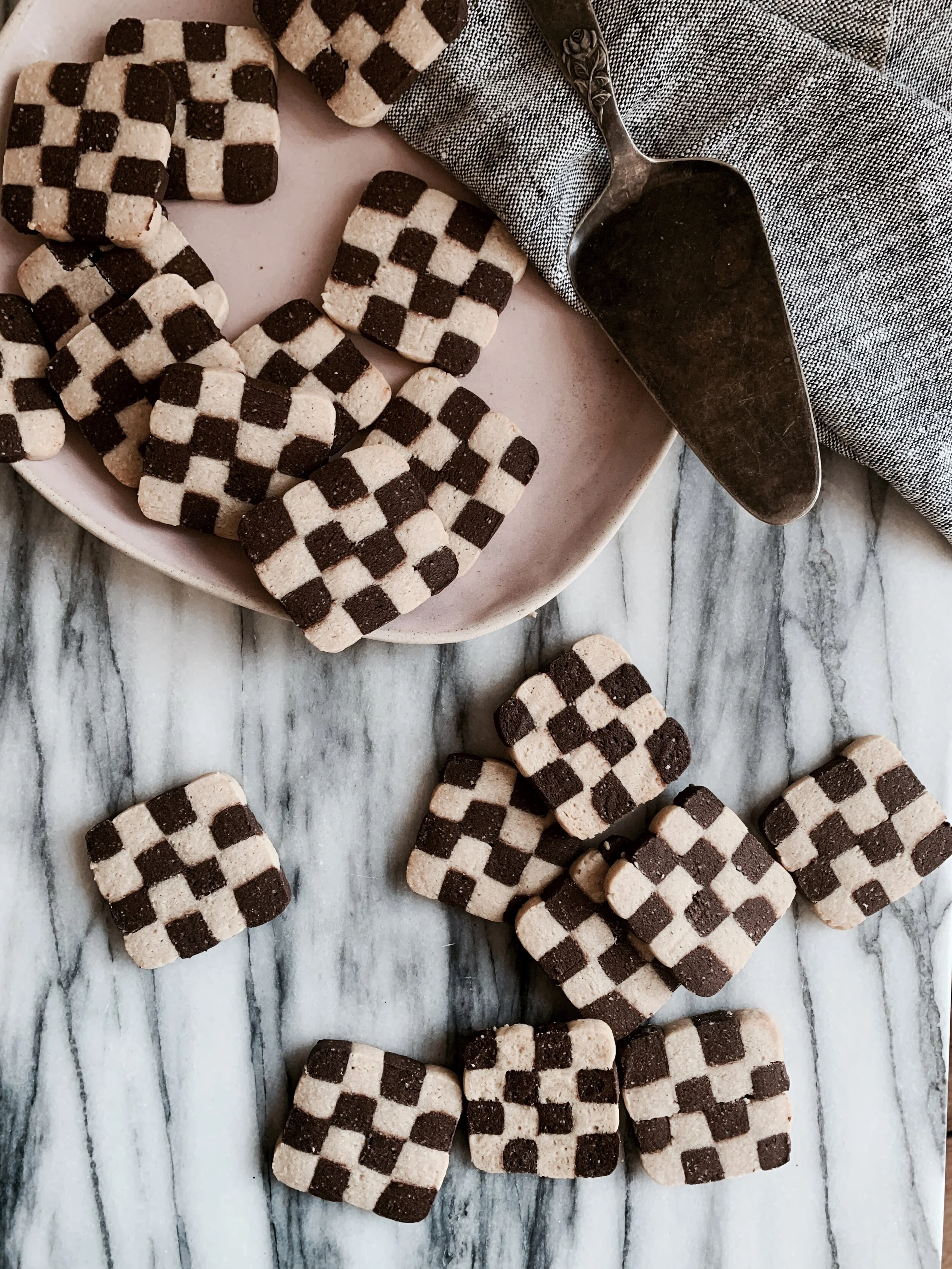This recipe is in honour of my dad’s German godmother, Marga.
Every Christmas we’d receive a chunky envelope in the post, filled with a slightly squashed slipper of powdery stollen. It would last no longer than 5 minutes in the kitchen before being devoured – a heady mix of sweetness and nuttiness, with saturated rum-soaked dried fruits and a core of marzipan. It was ambrosial, with only one minor fault: the marzipan core. Perhaps I should feel shame to admit this but on occasion I have scraped my spoon along the “caramel swirl” element of an ice cream tub because I wasn’t satisfied with the caramel to ice-cream distribution per bite. I feel similarly about the marzipan core – it’s not so much that there needs to be more, but that it needs to be more evenly distributed (otherwise it’s in danger of being scooped out by my teaspoon…). I’ve made sure to remedy this in my recipe by rolling the dough up with a sheet of marzipan to create an evenly distributed marzipan swirl – it also looks more appealing. Marzipan can be a controversial element, and you can leave it out so that you end up with something fruit-studded along the lines of a dense panettone. My brother is not a marzipan fan, yet despite this has been consuming the stollens I’ve made over the last week with gusto.
This recipe is delivered with a warning:
this stollen, despite its understated, simple, appearance, is highly addictive. I ate almost an entire stollen in one day and felt quite sorry for myself afterwards (guilt streaked sugar-overload), so arm yourself with friends or a freezer before making it.
A non-traditional adaptation I’ve made is to substitute glacé cherries for lemon peel.
I feel the latter is too bitter, but free feel to free-style with other dried fruit of your choice. I’ve also subbed in Van Der Hum (tangerine liqueur) and Kirsch for the rum, to echo the flavours of the fruit – once again, you can just use rum or another sweet fruit liqueur or dessert wine.
I also made my own candied orange, and have included a recipe for this at the end in case you’re so inclined. It really elevates the flavour of the stollen, and has a less bitter flavour than store-bought. If you don’t have time, it’s fine to use store-bought.
In the photos (and recipe) I have coated the stollen with icing sugar, as is traditional. However, you can leave this step out if you want a less sweet version. I’d argue it tastes equally delicious without, albeit less aesthetically pleasing.
Cherry & Candied Orange Stollen Recipe
(Makes 2 large loaves)
Ingredients
For the filling
125g raisins
125g sultanas
100g glacé cherries, roughly chopped into eighths
80g candied orange peel (chopped into pieces roughly about 0.5cm2)
100g ground almonds
100ml sweet fruit liqueur (I use 50ml Kirsch, 50ml Van Der Hum)– you could use a mix of any of the following: rum, Vin Santo, Cointreau, Chambord)
Dough
250ml lukewarm water
14g (2 sachets) of active dry yeast
100g (30g + 70g) caster sugar
1 large egg + 2 egg yolks, lightly whisked together
160g unsalted butter, at room temperature, roughly chopped into cubes
2 tsp vanilla extract
Zest of 1 lemon (finely grated)
1 tsp salt
1/8 tsp ground cardamom (i.e. seeds of 8 cardamom pods, ground)
1/8 tsp nutmeg
½ tsp cinnamon
700g strong bread flour (or plain if that’s what you have)
250g marzipan
Topping (traditional, but optional)
icing sugar (approximated 200g)
50g unsalted butter, melted
2 large baking sheets, lined with greaseproof paper
Method
1) Pour lukewarm water, yeast and 30g caster sugar into the bowl of a stand mixer and allow to stand for 5-10 mins until the yeast becomes bubbly and frothy.
2) In a separate bowl, place all fruit (raisins, sultanas, glacé cherries and orange peel) and ground almonds. Pour over the liqueur and stir until fully mixed together. Set aside for the fruit to absorb the liquid while you make the dough.
3) Into the mixer bowl with the yeast, sugar and water, pour in the remaining 70g caster sugar, the eggs, vanilla, lemon zest, salt, ground cardamom, nutmeg and cinnamon. Stir together until even distributed, then pour in the flour.
4) Using the stand mixer, fitted with a dough hook, knead on slow-medium for around 8 minutes – you may need to add a touch more flour if it looks too sticky (this can be caused by a humid or warm atmosphere). Sometimes I take it out of the mixture for one final knead by hand on a lightly floured surface. It is ready when you press your finger into it and it springs back. Place in a lightly greased bowl and cover with clingfilm to rise for an hour to an hour and a half, or until doubled in size.
5) On a lightly floured board, divide your marzipan into two. The marzipan I buy comes in a brick-like shape so I slice it in half to retain the rectangular dimensions. Take one half, and with a rolling pin, roll it into a roughly 30cm x 20cm rectangle – it doesn’t matter if the edges aren't perfectly straight. Repeat with the other half and set both pieces aside on a lightly floured surface.
6) Once the dough has risen, punch is back down (the most fun part), and pour in the fruit-almond mixture. Once again, using the mixer fitted with the dough hook, knead the dough and fruit together until fully combined – you may need to add another 50g or so of flour if the mixture is too sticky (soft dough is good so you don’t want to add too much).
7) Take half the dough and place on a heavily floured surface. Then pat it into a rectangle of roughly 32 x 24 cm (i.e. slightly larger than the marzipan rectangle). You can use a rolling pin but I like to use my hands to stretch and flatten it. Take one sheet of marzipan and lay it flat on to the dough - it should fit neatly like a concentric rectangle. Then take the long edge of the rectangle and begin to roll the dough and marzipan together into a log. Finish rolling with the seam side underneath the log. Lift this on to the baking sheet, cover with a cloth and allow to rise for a further 45 minutes. Repeat with the second half.
8) About half an hour into the dough’s rising, preheat the oven to 170°C. Once the logs of stollen have risen, place them in the oven and cake for 40 -50 minutes until they’re a deep gold colour and cooked all the way through (checking after 30 minutes to ensure they aren’t burning). I rotate the baking sheets after half an hour to ensure the bake is even.
9) Remove from oven and allow to sit for 5 minutes before doing the sugar coating. This step is optional. With a thin skewer or cake tester, poke lots of holes into the stollen. Then brush each stollen evenly with the melted butter. Pour over enough icing sugar to stick to the butter and coat the stollen on top and round the sides. Then, using your hand, gently rub it into the surface. You may need to add more icing sugar as you go.
10)Allow to cool, and devour. NB this can last for up to 3 months in an airtight container in the freezer. I like to pre-slice mine to make it easier to defrost and eat slice by slice. You can also wrap it up, keeping it in an airtight container in a cupboard, and eat it up to 5 days later – the flavours mature over time (if you can wait that long).
Candied Orange Peel Recipe
Makes around 200g
Ingredients
6 oranges
200g caster sugar
125ml water
Small baking sheet lined with greaseproof paper
Method
1) Peel the oranges so that the skin comes off in wide strips. Then slice these strips into thinner, even strips (about 0.5cm wide).
2) Place the peel in a medium saucepan and pour in enough water to more-than-cover the top of the peels. Place on a high heat and boil for 25 minutes. Then drain the water off (it will taste gross and bitter so don’t bother keeping it for anything), and place the peel on a plate while you prepare the syrup.
3) In a medium saucepan, pour in sugar and water. Place on high heat and stir until the sugar has dissolved. Continue to boil until the mixture thickens into almost maple syrup viscosity. Remove from the heat.
4) Put the orange peel strips into the syrup mixture, and once again place on a medium heat. Allow to simmer for about 10 minutes (stirring occasionally to avoid sticking and burning) until the liquid has thickened and the peel has become translucent.
5) Remove from the heat, drain the rest of the syrup into a container. You can use it to drizzle over toast or pancakes, or even over yogurt. Then place the orange peel on to the baking sheet to cool.
6) You can store the candied peel for up to a week in a sealed container in the fridge.
